19 April, 2018
Enduro: 29’’ bikes have taken over
We got together our ambassadors Markel Uriarte, Simon André and Douglas McDonald for an interesting chat to analyze the rough start of the 29” wheel, with a lack of sturdy tires and less-than-friendly geometries, and how they have evolved to the point of becoming true enduro machines.
If you already know our contributors, we recommend you skip directly to the conversation. But just in case, we’ll introduce them briefly to you:
Markel Uriarte fell in love with enduro back in 2011-2012, when they first started to hold races in this new discipline in the Basque Country. In 2012 he won the MaxiAvalanche Challenge in Vallnord and in 2013, as a member of the Orbea Enduro Crew, he came in third in the sub-23 category of the Big Ride Tui. Over the next few years and culminating with his recent victory in the EndurAstur in Pola de Siero, he has always won on his Rallon.
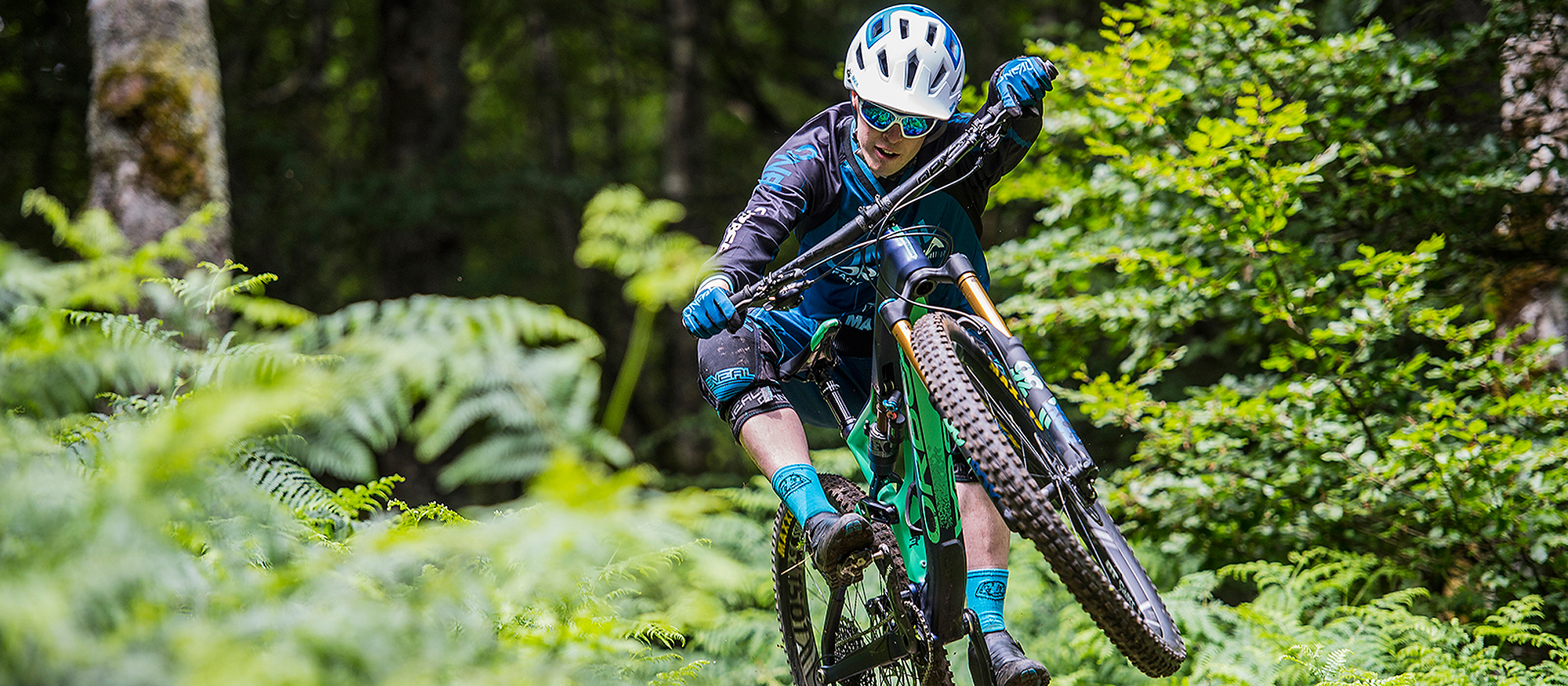
Simon André is a four-time French DH champion, came in third in the 2010 Enduro series, third in the 2015 Shimano Epic Enduro Race and second in the recent Trans-Nomad. But beyond his results in competition, Simon is a true fan of the process of creating bicycles and has contributed his knowledge and experience in the development of the last two generations of Rallon.
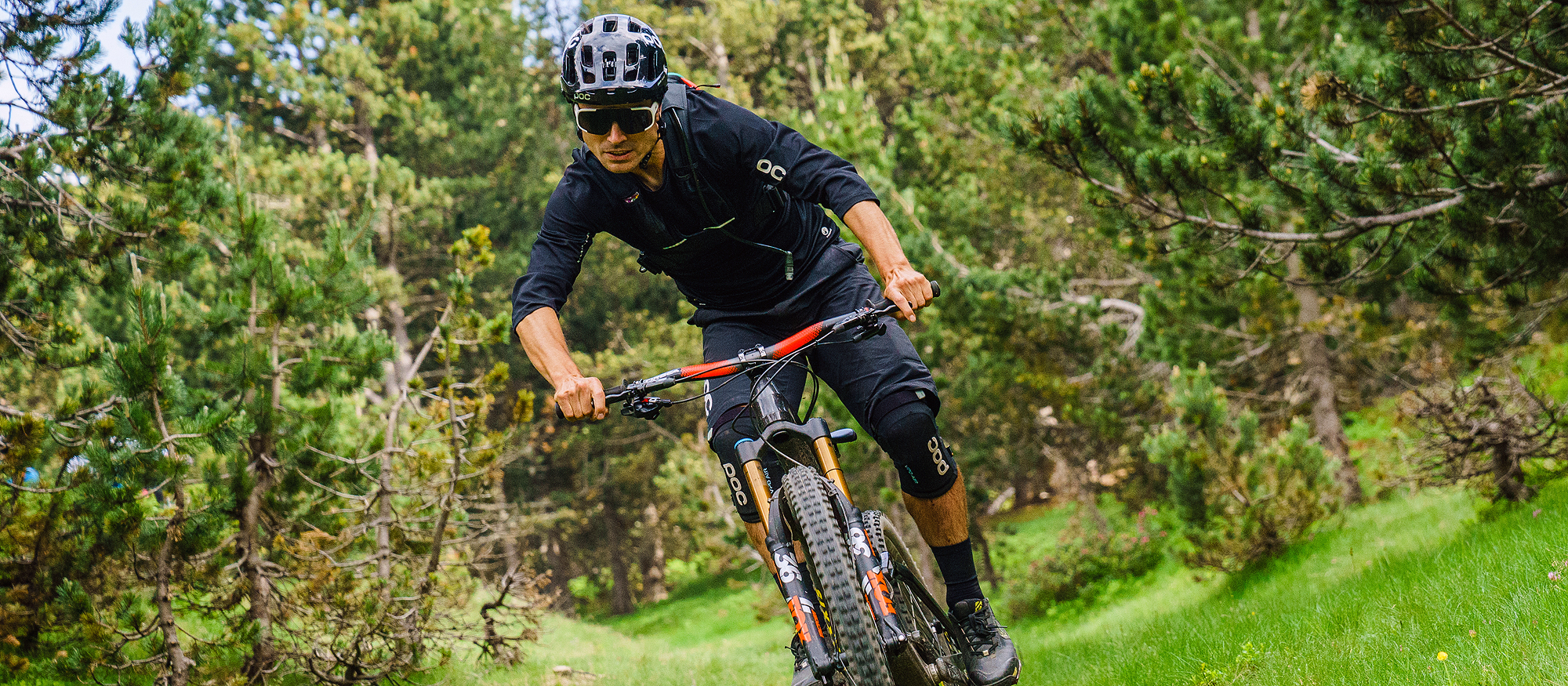
Douglas McDonald (Doug, to his friends), in turn, is a free spirit. As manager of BasqueMTB, this Scott who fell in love with the Basque Country has, for the last 9 years, been riding and guiding riders over the most challenging trails and paths in the Basque Country and the Pyrenees.
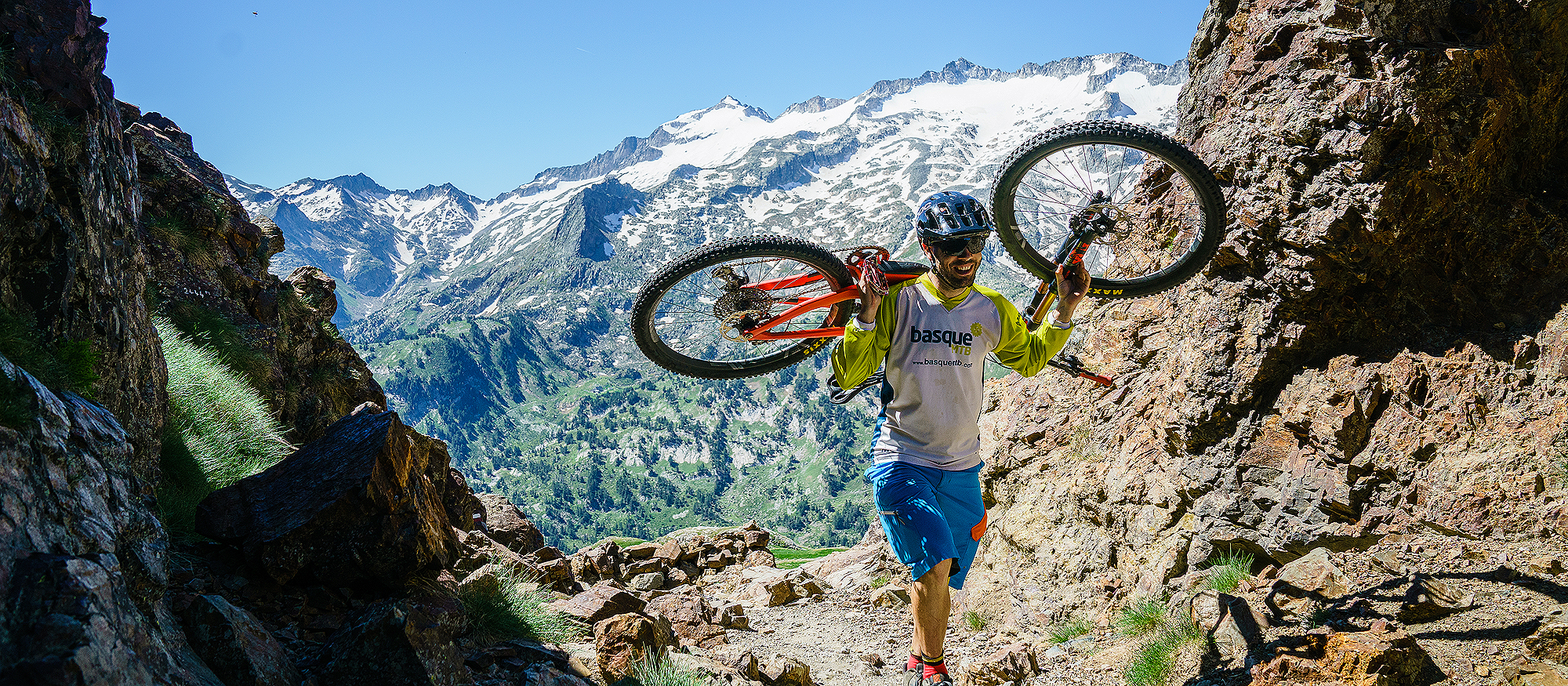
Three different rider profiles with the same passion share their insight and experience in this chat. We hope you enjoy the discussion!
Orbea: What was your first experience on a bike with 29” wheels?
Simon André: I think it was in early 2012.
Markel Uriarte: In my case, it was a bit later, at the end of 2013, when the Alma 29er came out.
Douglas Macdonald: I was a bit luckier, my first 29er was a 150-mm full suspension, a Commencal AM 29, which was great fun for the time, in 2012. Then the Occam came along.
Did you ever think that 29” bikes would become “the future” of MTB? When did you imagine for the first time an enduro bike with 29” wheels and an aggressive geometry?
Simon André: I live in the South of France, and here most trails are loose and have poor grip. 29” bikes had a great advantage in terms of traction in this terrain, and that’s when I started to believe in them. As a matter of fact, I talked about them a lot with Xabi (Xabi Narbaiza, our MTB product manager) and the innovation department at Orbea to see if they could make a 29’’ with a super aggressive geometry…. And they’ve done so.
“I didn’t believe that 29” wheels could be successful in enduro, but when I tried my first full suspension bike with 29” wheels (Occam TR), it impressed me with how fast it went downhill”
Markel Uriarte: In my case, until a couple of years ago, I didn’t believe that 29” wheels could be successful in enduro, but when I tried my first full suspension bike with 29” wheels (Orbea Occam TR), it impressed me with how fast it went downhill. In relatively smooth descents, I was able to equal or even improve on the times I did on the Orbea Rallon R4. In other words, with a trail bike with 29’’ wheels, I rode practically just as fast as with a 27.5” enduro bike. It was then when I realized that a 29” bike with a more aggressive geometry and more suspension travel might be able to improve times in all types of descents.
Douglas Macdonald: To be honest, I never would have imagined it: I love 27.5” wheels and I thought the Rallon R4 was pretty much perfect. If it would have been made of carbon with a bit stiffer rear end, I would have married it. 😉 But when you told me what you at Orbea wanted to do with the new R5, I started to have nightmares… but I was dying to try it out.
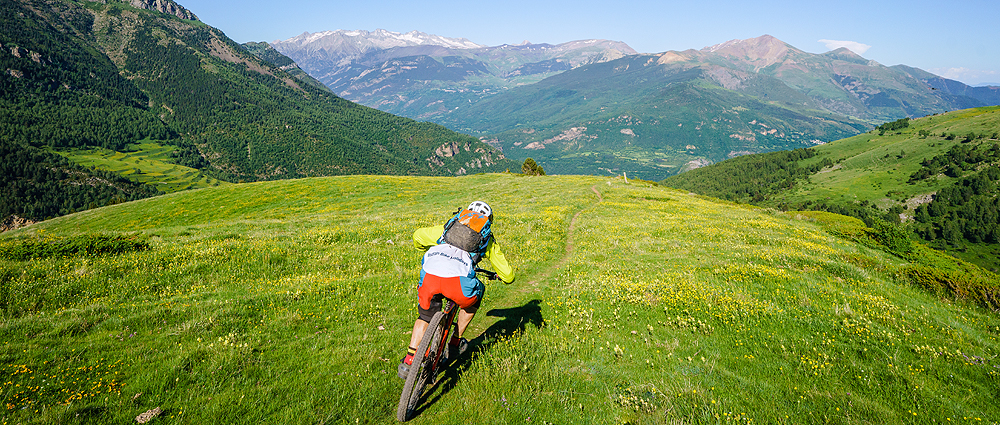 |
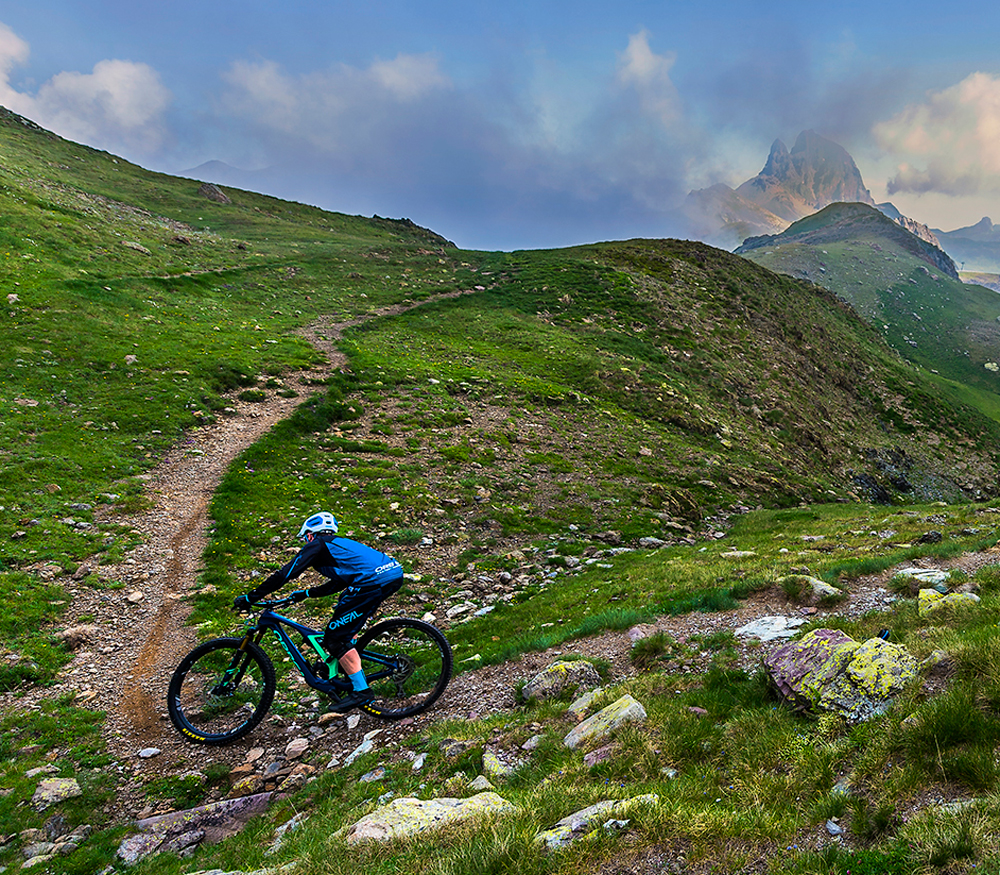 |
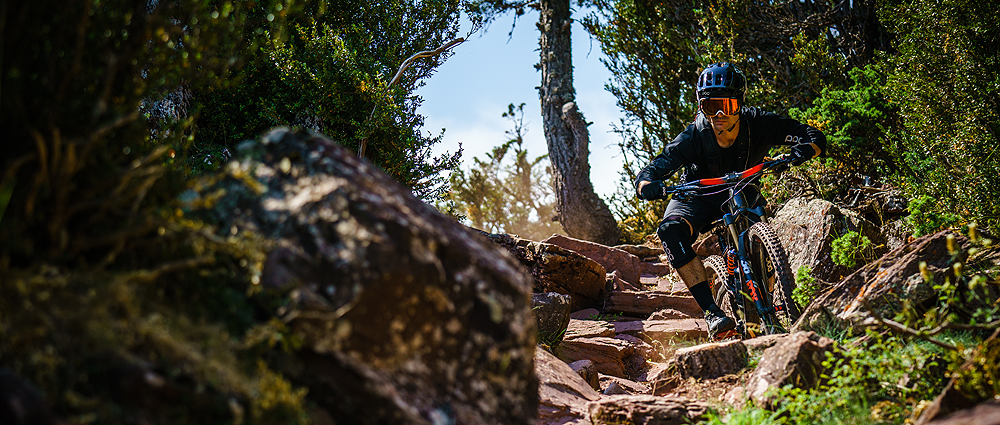 |
Now that you’ve tried the new Orbea Rallon: What were your first impressions?
Simon André: For me, it’s a dream come true. I love the R5; you can reach your limits and the bike asks for more. Before, that wasn’t possible. I would highlight how secure and comfortable you feel on very technical and demanding trails.
Markel Uriarte: In my case, the first time I rode it was in Castejón de Sos and the impression I had when I got on it was that it behaved more like a DH bike compared to the R4. The big wheels, aggressive geometry, etc. gave me a great sense of security in fast, uneven zones because of its great stability and ease in getting around obstacles. In the pedaling zones during timed sections, I noticed greater ease when pushing hard and in the climbs it behaved just as well as the Rallon R4.
When I tried the bike on the descents in the Basque Country where I usually ride, it surprised me with how well it rode. The descents where I train are very twisty and really slow and I didn’t at all expect that a bike with such a long and stable geometry would be able to handle such hairpin turns and still be so manageable.
“I really didn’t think a 29” would be able to take the corners so well”
Douglas Macdonald: I’ve spent a lot of time on it already, and I basically agree with Simon and Markel, although my first impression was visual: it is really nice looking. The first time I rode it was on a trail behind my house, one that is very, very steep, with tight switchbacks and bermed corners. I really didn’t think a 29” would be able to take the corners so well, letting me exit so much faster. I think the pedaling, especially in the climbs, has also improved with the new geometry and suspension. It was obvious straight away from looking at the bike that it was going to destroy steep, rocky and fast trails.
Simon André: I very much agree with Doug on this: the design and appearance are very important for any high-end bike. If you don’t like the look, you won’t notice it. And in the case of the Rallon, it's impressive. When we combine the beauty with impeccable function, it’s a dream come true. The improved pedaling is joined with its great downhill character, along with a geometry that is the most similar I’ve ever seen to a downhill bike, like Markel said.
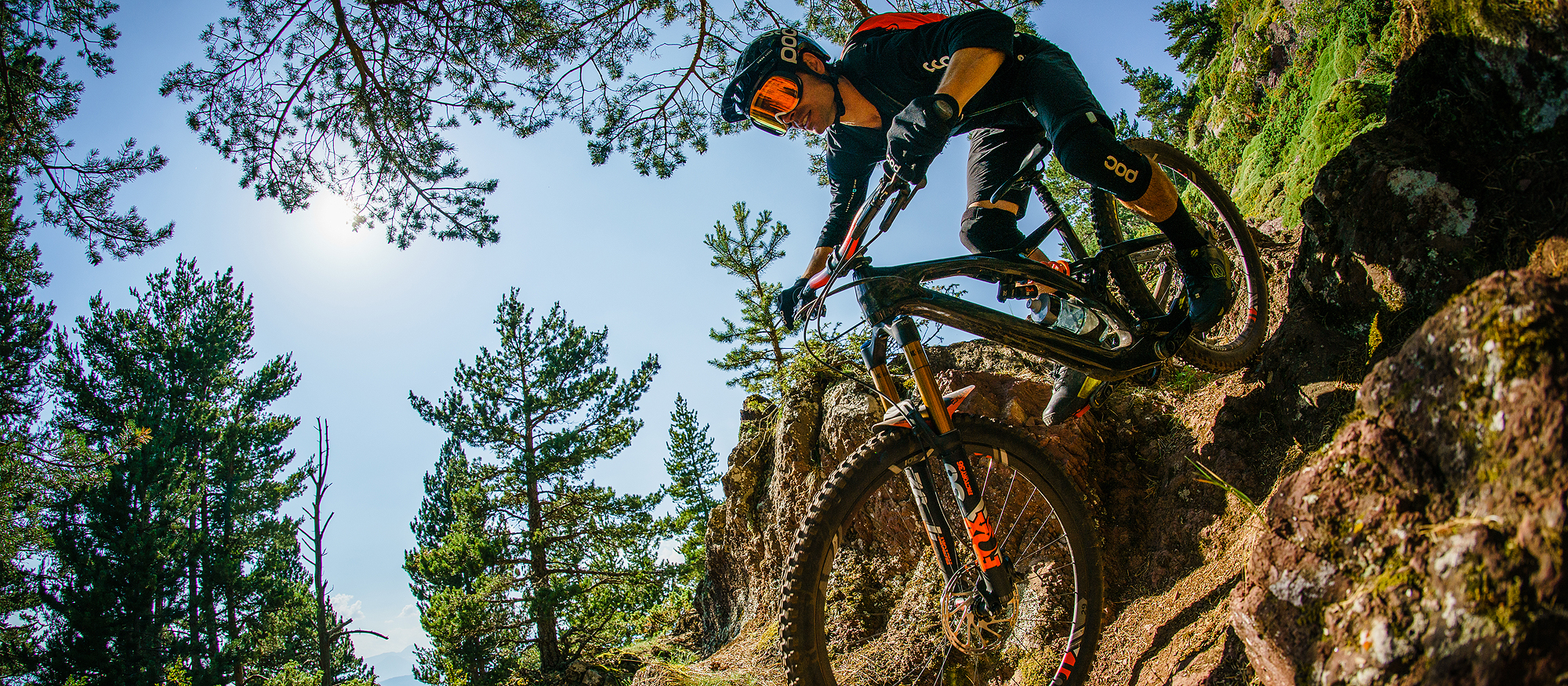
Markel Uriarte: I saw that the Rallon R5 is a really fast bike on all types of terrain. It handles like a breeze and manages the twisty zones with great agility. But it’s on fast, uneven terrain when this bike shows you its true potential. The security and stability it transmits make you let go of the brakes much more frequently compared to the Rallon R4.This translates into greater security. It’s also a very comfortable bike to ride, a little stiffer than the R4, but not excessively or uncomfortably so.
And what you were saying about the looks is exactly right: I think it's spectacular, with much thicker tubes, more molded shapes and weld-free, since it is made from carbon.
Douglas Macdonald: Compared to the previous version, the R5 carries speed a lot better. The cornering is a lot more stable and you can really throw it into the corners. Another thing I like is that it is very quiet. On steep climbs it is very docile and the new system improves the pedaling a bit. The new design makes the shock more accessible, and for me that’s a plus when it comes time to making modifications. An interesting point is that with this bike, I have to be very careful when I go out as a guide for other MTB riders. It’s so fast that many times I leave them far behind and I don’t even notice it (he laughs).I have to keep it in mind all the time!
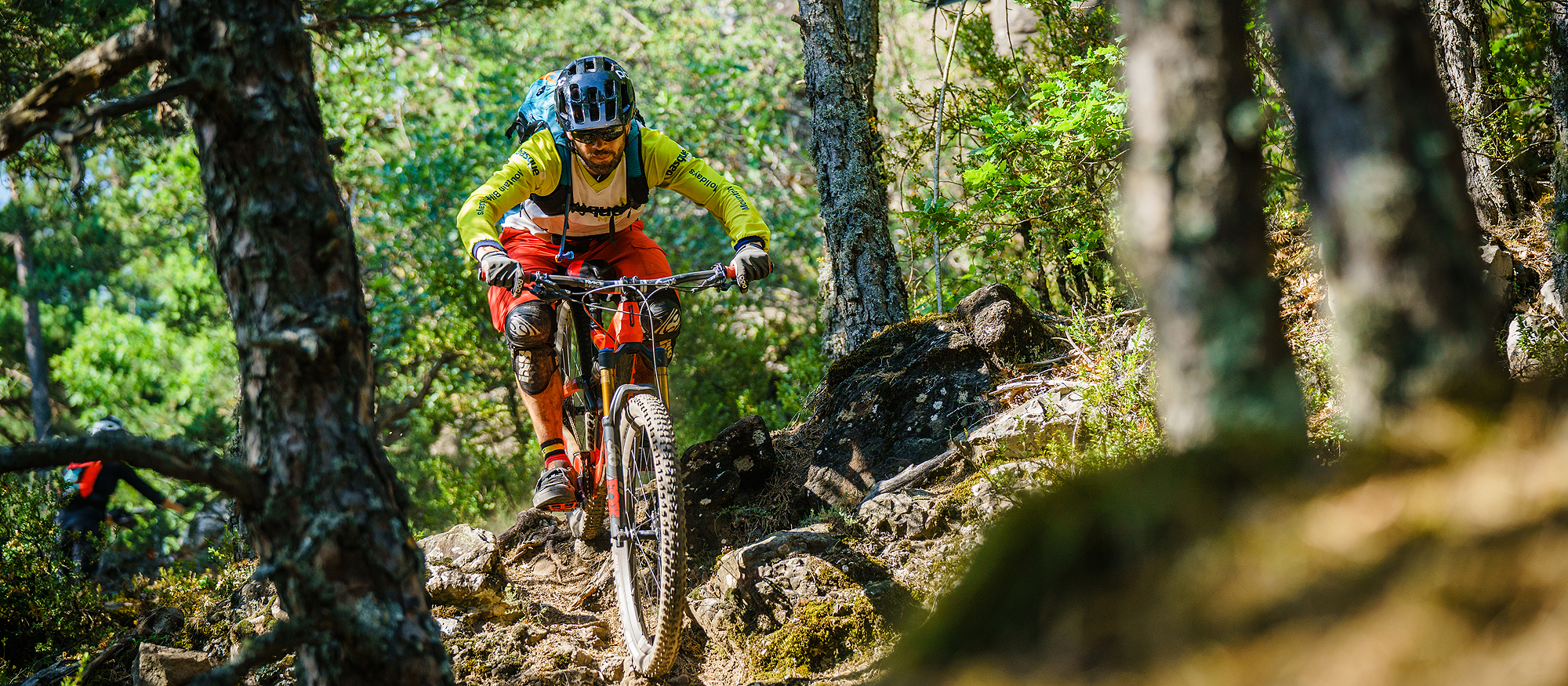
Simon André: What I love about the Rallon R5 is that it lives in both worlds: it is ideal for competition, but also for the rider who just wants to have fun on the weekend.
Markel Uriarte: The geometry of enduro bikes has changed a lot over the last 2 years. The geometries are now much more aggressive and similar to downhill bikes from a few years back, but optimizing them so they don’t lose manageability and pedaling capacity.
These new geometries help us reduce times in the timed segments and nowadays, the races tend to be increasingly close and that can help you climb a few positions.
“What I love about the Rallon is the sensation of speed, the flow, the lack of noise while descending all out, looking for new lines that I didn’t consider before”
Douglas Macdonald: Personally, I don't compete at all. My philosophy is based on enjoying mountain biking. Of course, I like riding fast, but it’s about personal satisfaction, not riding 2 seconds faster or winning a trophy. What I love about the Rallon is the sensation of speed, the flow, the lack of noise while descending all out, looking for new lines that I didn’t consider before. In addition to all this, the new R5 lets me ride more comfortably, with a lot less fatigue on by body, and still feeling good after several days guiding in the mountain.
Which of the two geometries will you use on a regular basis and why? Lower bottom bracket at 336 mm and a 65º head angle or a higher bottom bracket at 65.5º?
Simon André: I use both of them, and I alternate between them according to the terrain where I’m going to ride. In the lower position, you feel almost as if you were on a downhill bike, but without losing pedaling capacity.
Markel Uriarte: I normally use the higher position. With this geometry, I find a perfect balance between manageability and stability on the circuits I normally ride.
Douglas Macdonald: I’m one of those who like to try new things and I’ve gotten used to using both, because they're so easy to change. That’s the idea, isn’t it? (He laughs.)I use the low on very steep terrain and it’s really noticeable. The higher position is for terrain where you need to pedal a bit more and that is less steep.
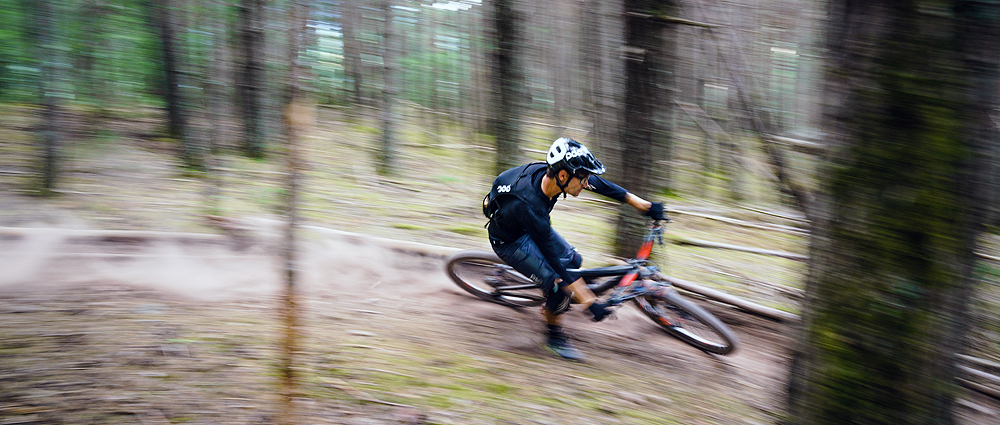 |
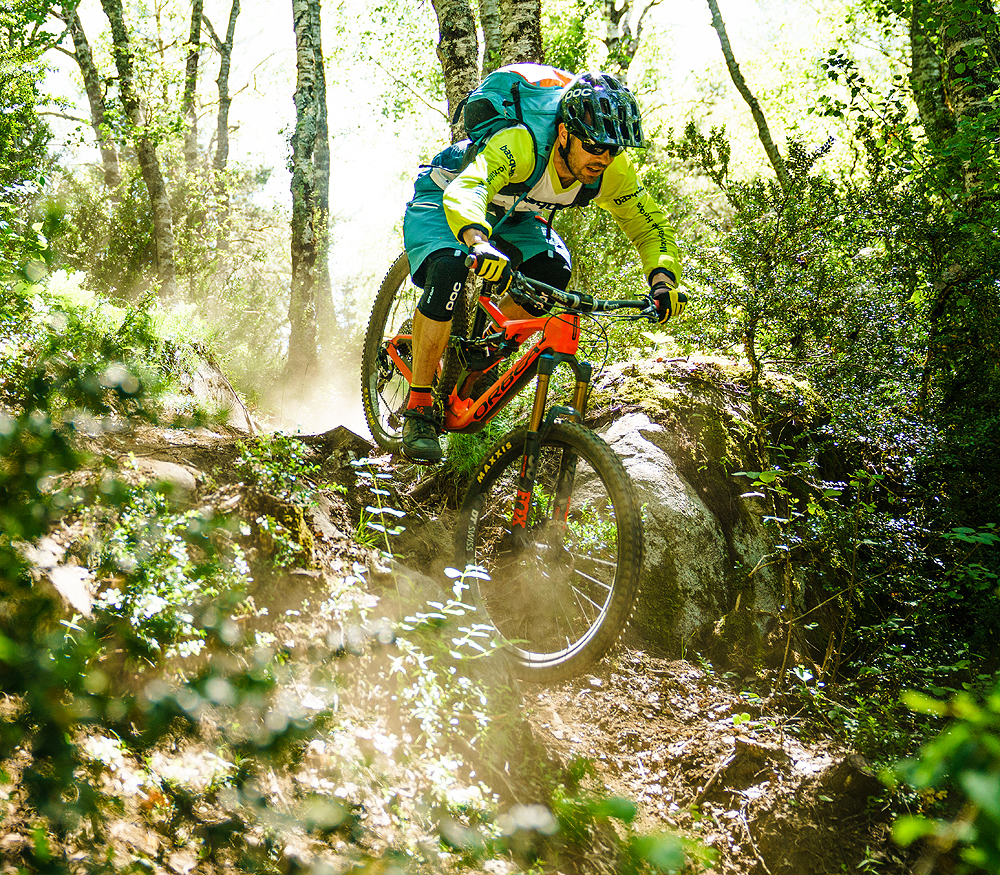 |
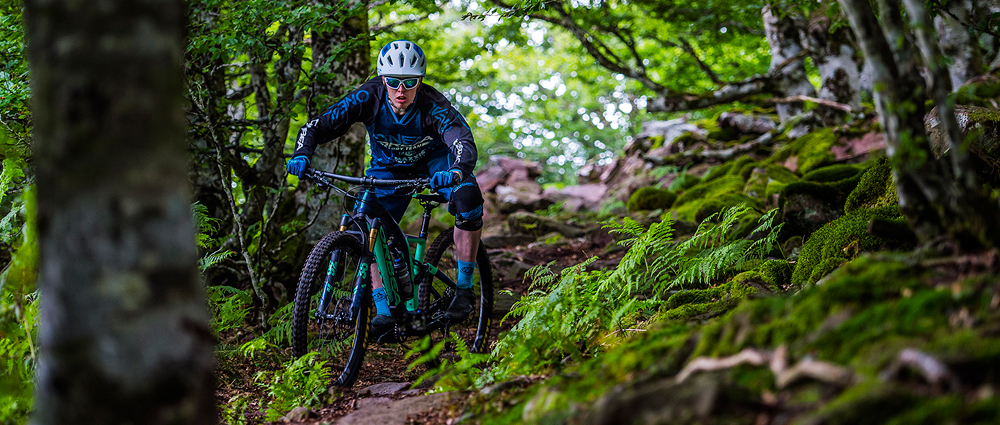 |
How much do you think the 29” wheels will fare against the clock on your next race or in your Strava? Have you already done a real comparison on the terrain with the 27.5” (or the Rallon 27.5”)?
Simon André: I’m not sure, but I think there are advantages to both wheels. But I know that with 29” you can ride faster and use less energy that with 27.5”.
Markel Uriarte: The Rallon with 29” wheels improved my times. In my case, I’ve done several tests in Strava and in competition. And like Simon, I imagined that I was going to improve my times, but I didn't think the difference would be that much.
From the first downhill I did with the R5, I’ve beaten times I had with the R4. On the circuits that I normally ride, which in general are slow and twisty, I am able to reduce my time by between 1 and 2 seconds for each minute of descent.
And I think that on the fast, uneven circuits this difference will be even greater. This improvement is enormous, since in the races, the times are getting closer and closer, and 10 seconds can mean the difference between winning a race and coming in fifth or sixth place.
From the moment I saw with Strava how my times were improving on all descents, I’ve been impatient to see how this will translate in competition. The first time I tried it was at the EndurAstur in Pola de Siero, and the result couldn’t have been better: I came in 1st in the elite and 1st in the scratch, 18 seconds ahead of the second place finisher. Keeping in mind that I’ve participated in around 20 EndurAstur races and I had never managed to win the race in the scratch category, it makes me think that the bicycle has helped a lot in achieving this result.
Douglas Macdonald: Strava? That’s the app that destroys the trails we build, isn’t it? I’m 0.25 smiles happier at the end of the day. Good enough?
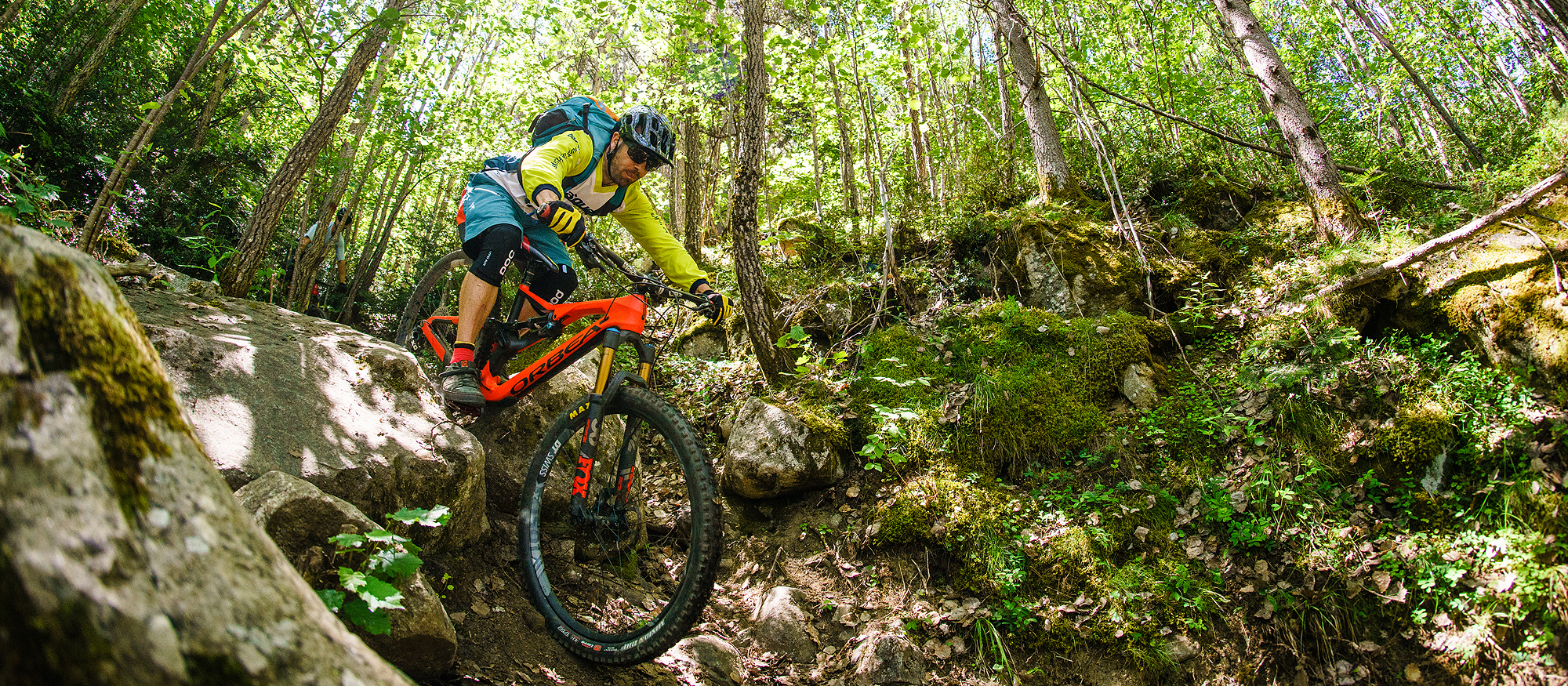
Picking up on what Doug said, at the end of the day, what’s important is how much you enjoy yourself on your bicycle: Do you think that the 29’’ wheel contributes to that?
Markel Uriarte: In my case, there’s no doubt about it. With the Rallon R5, I can do lines that I thought were impossible until now and go faster in every turn, jump, etc., in other words, I go more with the flow, which produces a smile at the end of each descent.
Simon André: In two words: “Yeah boy!”
Douglas Macdonald: I don't think, I know that I’m enjoying riding more at the moment with this bike.